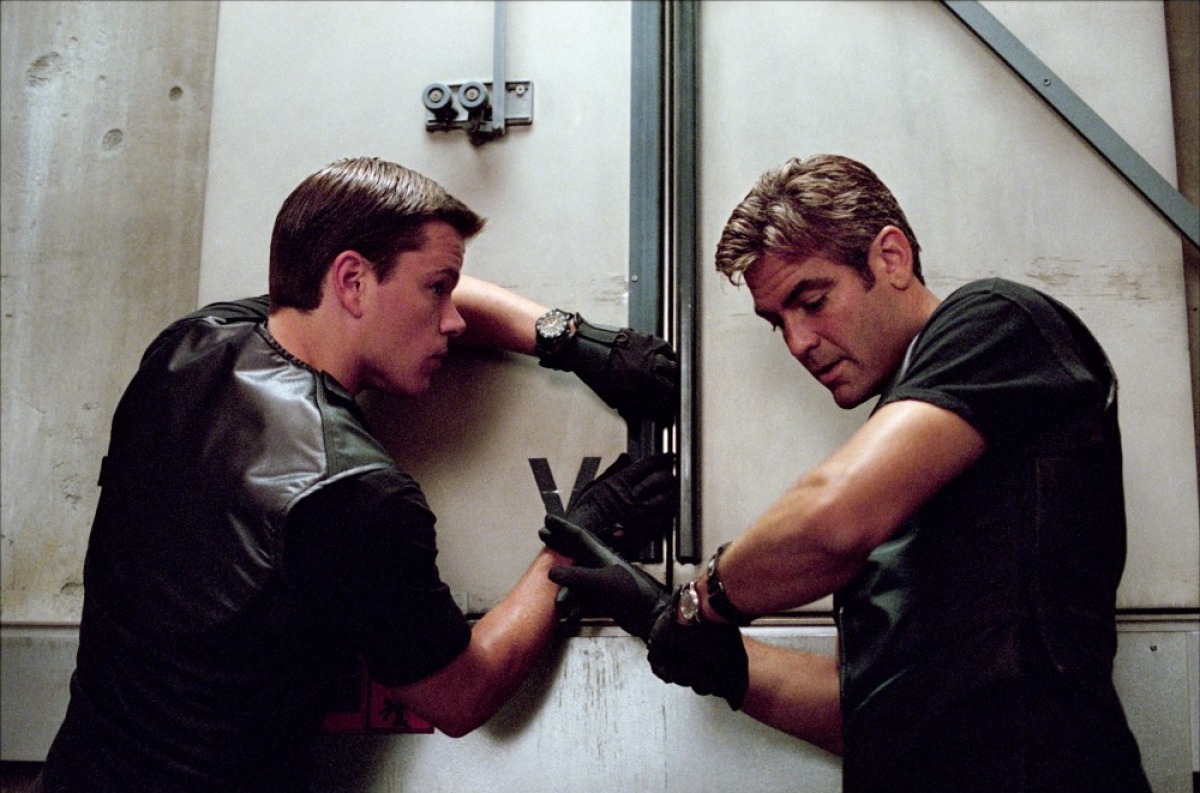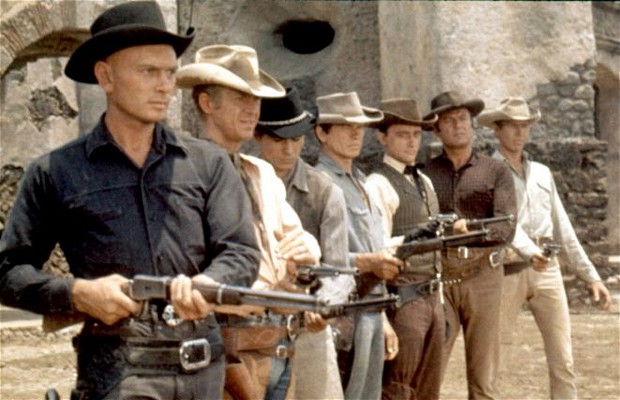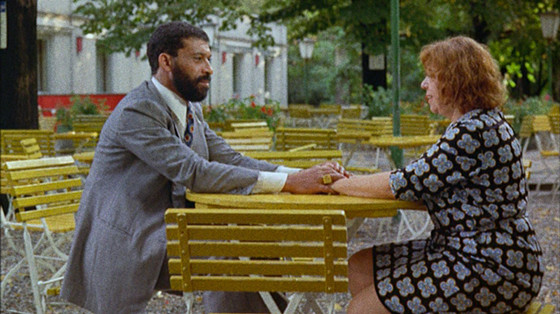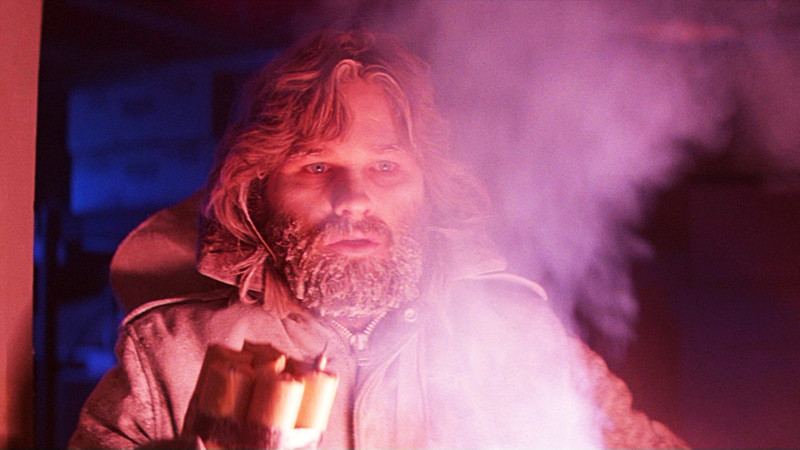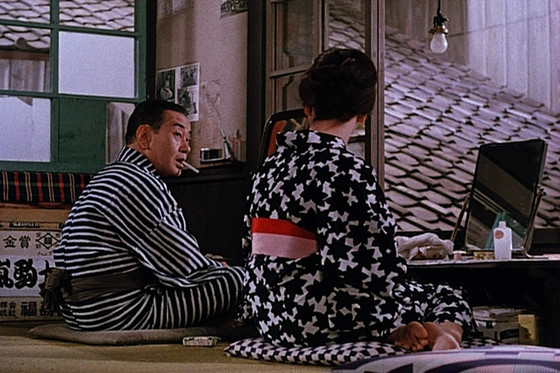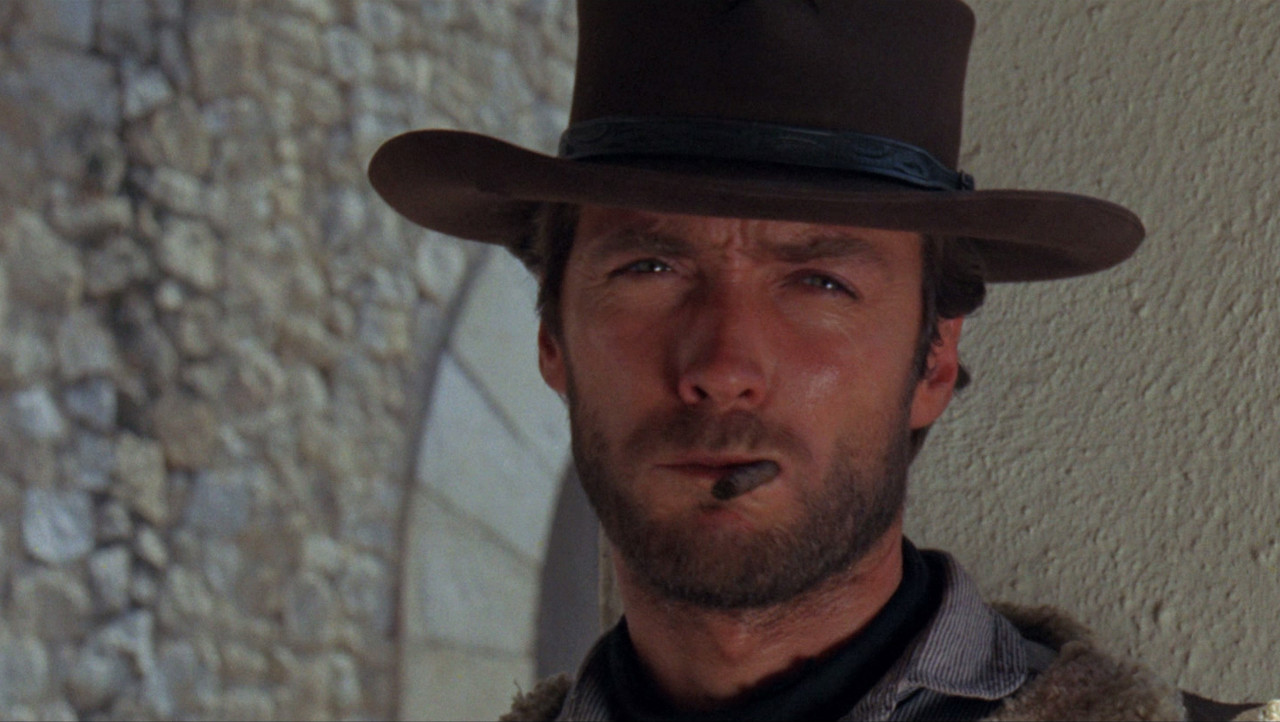7. Ocean’s Eleven (Steven Soderbergh, 2001)
Indie director Steven Soderbergh brings the classic “Rat Pack” caper Ocean’s 11 to the present day with an all new ensemble cast. George Clooney stars as Daniel Ocean, a con man who is recently released from prison. He soon meets up with his partner in crime Rusty, played by Brad Pitt, and they plan a new heist.
Their targets, however, are giant Las Vegas casinos so they need to gather a large crew of eleven people in order to pull of the job. These include actors, drivers, acrobats and demolitions expert and they all struggle to deal with an increasingly complicated heist.
The impressive cast which also stars Matt Damon, Julia Roberts, Elliot Gould, Andy Garcia and many others is the core that holds this film together and makes it great. The story itself is basic and while the complex execution of the crime is entertaining, the banter and chemistry between the struggling criminals is the greatest part. Their impromptu comedy and dialogue turn an otherwise formulaic heist movie into a tremendously fun crime flick, even outdoing Frank Sinatra and his friends.
While Ocean’s Eleven is not the most important film, is a very entertaining remake that shows the benefits of bringing past works into the public view.
6. The Magnificent Seven (John Sturges, 1960)
A wild west retelling of Akira Kurosawa’s seminal epic Seven Samurai, the film focuses on a small Mexican town that is constantly raided by the bandit Calvera, played by Eli Wallach. Fed up with dealing with Calvera, the village leaders go to a larger town to buy supplies to fight off the bandits but instead end up hiring seven skilled gunslingers to protect them.
These protectors, played by many great actors including Yul Brynner, Steve McQueen and Charles Bronson, end up bonding closely to the citizens of the town and even begin to train them to defend for themselves.
This exciting western was one of the first major international remakes in Hollywood and proved to everybody how successful they could be. The tremendous ensemble cast also helped gain popularity for the film leading it to increase the prominence of Kurosawa in American culture.
Another notable aspect of this film was the rousing and celebrated score by composer Elmer Bernstein which adds to the excitement of the picture. One of the most referenced and iconic Westerns in cinema history, The Magnificent Seven is a tremendous and iconic American film.
5. Ali: Fear Eats the Soul (Rainer Werner Fassbinder, 1974)
This masterpiece by German auteur Rainer Werner Fassbinder may be the least obvious remake on this list but it is also one of the most similar to its original. The film is based on Douglas Sirk’s gorgeous love story All That Heaven Allows. Sirk was one of fassbinder’s greatest influences and decided to remake the classic, while adding a few more variables to the plot.
Brigitte Mira plays an aging widower who meets a strapping young Moroccan worker by chance and the two start up a relationship. Despite being over twenty years apart in age, the two fall in love, but they must fight against the strains of society that try to keep them apart.
The story of controversial lovers is by no means new, but under Fassbinder’s direction the film conveys the message incredibly powerfully. Using calculated but and diverse implementation of color and framing, Fassbinder manages to show the purity of the couple’s love for eachother while simultaneously showing how society is boxing them in to the norms.
A masterpiece in style and emotion, Ali: Fear Eats the Soul is an incredible and touching romance that addresses important themes of society.
4. The Fly (David Cronenberg, 1986)
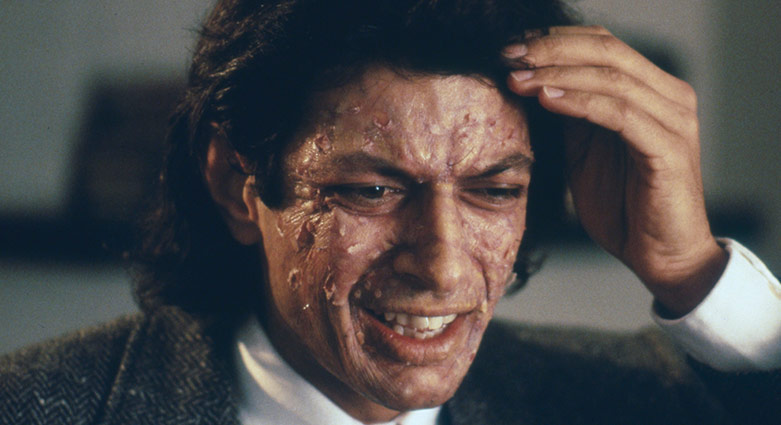
One of body-horror master Cronenberg’s most powerful and also one of his grossest films, is based on a fun B-horror film starring Vincent Price of the same but adds his own, fresh twists. Jeff Goldblum stars as Seth Brundle, a brilliant young scientist who is working on a teleportation device. He begins a relationship with the a beautiful journalist Veronica, played by Geena Davis, and things his life is going swimmingly.
One night Brundle gets drunk and tests the teleportation device himself only to have a fly enter the chamber during the process. In the original film this resulted in a fly with a man’s head but Cronenberg creates a nasty story of Brundle slowly losing his mind and transforming into a frightening fly-human hybrid.
Cronenberg’s sci-fi horror masterpiece is an extremely disturbing tale, commenting on the human condition and it’s relationship with technology. Jeff Goldblum gives a fantastic performance and the Academy Award winning make-up effects were awe inspiring, if not terrifying.
As gross as it is emotionally affecting, The Fly is an excellent example of how remaking can update its importance and improve on its relevance.
3. The Thing (John Carpenter, 1982)
This classic science fiction thriller is based on the 1950s film The Thing From Another World as well as “Who Goes There?”, a novella by John W. Campbell Jr. Kurt Russell stars as Macready a helicopter pilot for an Antarctic research station.
When a mysterious dog appears, which is being hunted by Norwegian researchers from a base nearby, the Americans takes it in, caging it with the other animals. The dog soon transforms into a horrific mutant creature and starts attacking the other dogs and after MacReady kills it, they discover that it is an ancient alien that has the power to take the form of any creature it kills.
Similar to another film featured on this list, Invasion of the Body Snatchers, the terror from this film comes from not being able to tell enemies from friends. Because the alien could be anyone or anything, MacReady must be extremely and cautious to try and kill the beast.
Carpenter’s film is also notable for the incredible and frightening special effects of the mangled creations of the people inhabited by the alien, leading to some scary encounters. A terrifying horror story as well as an exciting sci-fi action film, The Thing takes an already chilling tale and turning it into an unforgettable classic of many genres.
2. Floating Weeds (Yasujiro Ozu, 1959)
Like Hitchcock, the Japanese master filmmaker also remade an early film of his. The original film A Story of Floating Weeds made in 1934 was black-and-white and silent, so Ozu wanted to remake it with his increased experience and technology because he liked the story so much.
The story follows Komajuro, played by theater actor Ganjiro Nakamura, whose Kabuki troupe arrives in a small seaside town. In the town lives Komajuro’s old girlfriend with whom he had a child many years prior.
They don’t let the child know that Komajuro is the father, instead saying he is an uncle, because he wants the kid to grow up to be more than an actor. Komajuro’s current girlfriend, however, becomes upset with the attention he pays the boy and plots to create a rift between them.
While Ozu does little to change the plot besides changing the time of the setting, his use of updated color is breathtaking. One of only a few color films that Ozu ever made, he shows great inspiration with his cinematography and vivid palette bringing new life to the story. His direction along with the brilliant performances make Floating Weeds an extremely emotional and poignant story on par with his other masterpieces.
1. A Fistful of Dollars (Sergio Leone, 1964)
The final film on this list is another remake of a Kurosawa film into a western, in this case the iconic samurai film Yojimbo. Leone’s film is the first in his “Dollars Trilogy” which also includes For a Few Dollars More and The Good, The Bad and the Ugly, all starring Clint Eastwood as a mysterious rider without a name.
The plot follows Eastwood as he wanders into a town that is split between two feuding families who are fighting for control of the town. Vastly more skilled than any other gunslinger in town, “The Man with No Name” manipulates both families and continuously switches sides in order to make more money. Soon both get restless and the situation becomes violent.
Leone’s picture popularized what would become known as the “Spaghetti Western”, an Italian sub-genre, known for vast expansive cinematography and bloody violence. The film also promoted Eastwood’s career as he was relatively unknown at the time, successfully holding up to Toshiro Mifune’s legendary performance.
With the film’s stunning visuals and exciting plot it soon became an international sensation and hailed as a promising new chapter in the western genre. Although it would be difficult to say that A Fistful of Dollars is actually superior to the film on which it is based, the ingenious relocation and setting keep the high intensity while creating a new and unique viewing experience.
Author Bio: Matthew Benbenek is an undergraduate Mechanical Engineering student at the University of Wisconsin – Madison. He has a passion for film, music and literature and, when not watching movies, is an amateur director and violin player.
